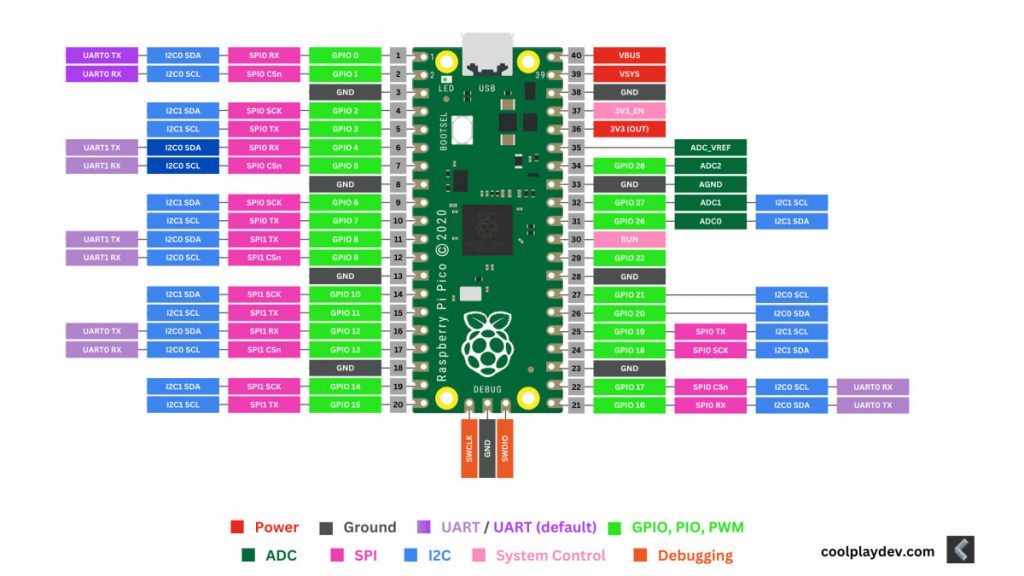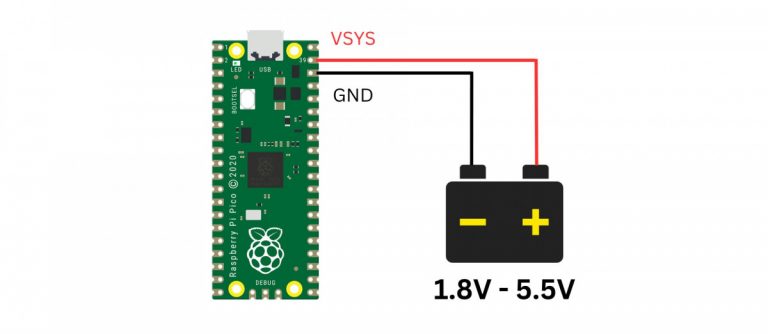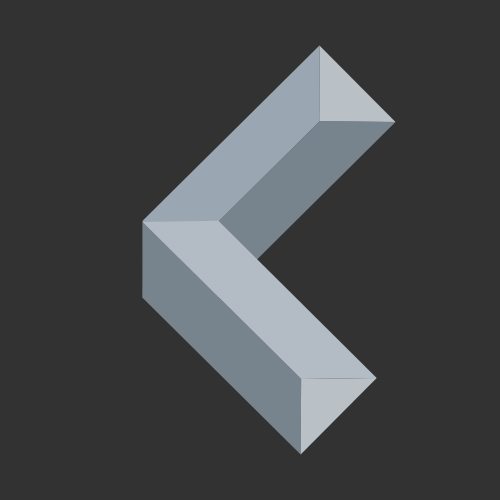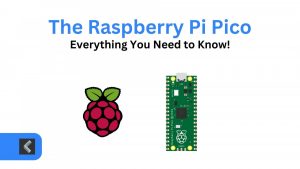In the world of microcontrollers the Raspberry Pi Pico has emerged as a popular choice among embedded developers of every skill level. This guide’s purpose is to make you familiar with the Pico as well, to help you harness all the powers of this neat little microcontroller board!
Keep Reading!
What is the Raspberry Pi Pico?

The Raspberry Pi Pico is a microcontroller board developed by the Raspberry Pi Foundation. The Pico is specifically designed for microcontoller applications, unlike the traditional Raspberry Pi single-board computers, which are rather general-purpose computers.
It is based on Raspberry Pi’s in-house-developed RP2040 microcontroller chip.
The first version that came out in January 2021 was the standard Raspberry Pi Pico, followed by the Raspberry Pi Pico W, which came out in June 2022 and offers additional WiFi and Bluetooth connectivity.
Also there are versions of both boards available that come with already soldered header pins – the Pico H and the Pico WH.
The Pico W
As already mentioned above, in June 2022, the Pico W was released.
The Pico W’s wireless functionality is provided by the Infineon CYW43439 chip, which contains a 2.4 GHz radio providing both 802.11n Wi-Fi and Bluetooth 5.2, supporting Bluetooth Classic and Bluetooth Low Energy (BLE).
However, there hasn’t been official support for the chip’s Bluetooth functionality for a year after release.
Luckily it is supported now since June 2023.

What's Special About The Pico?
Why should you choose the Raspberry Pi Pico over other microcontroller boards?
Firstly, the Pico is a small and cheap microcontroller board, making it a perfect fit for most DIY or prototyping projects. Also, its RP2040 microcontroller chip offers plenty of processing power for a board of this size. It even has two cores! That means that the Pico can perform two operations simultaneously.
Compared to similar boards like the Arduino Nano RP2040 Connect, which costs around 20 – 27 USD, the Pico is a lot cheaper, with only 5 USD and around 8 USD for the Pico W.
Additionally, with the Pico W, you’ve got a wireless interface, which not all microcontroller boards have.
Last but not least, the Pico can be very beginner friendly because of its MicroPython compatibility while giving the full power to more advanced developers with C/C++.
The Pinout of the Raspberry Pi Pico

The Pinout of the Pico W is almost the same as the standard Pico, only the position of the debug pins is a bit different.
Feel free to save this image!
Overview of the Pico's Specs
Here are some more specific specs about the Pico:
- Dimensions: 51mm × 21mm × 1mm
- Input voltage: 1.8V – 5.5V
- Logic voltage: 3.3V
- IO voltage: 3.3V
- Processor: Dual-core ARM Cortex M0+
- Clock speed: flexible up to 133MHz
- SRAM: 264 kB
- Flash memory: 2 MB
- *(Wireless interface: Infineon CYW43439 single-band 2.4GHz 802.11n)
- USB 1.1 Host and Device support
- Drag & drop programming using mass storage over USB
- 26 multi-functional GPIO pins
- 2×SPI, 2×I2C, 2×UART, 3×12-bit ADC, 16×controllable PWM channels
- Accelerated floating point libraries
- Accurate clock and timer
- Temperature sensor
- Low-power sleep and dormant mode
For even more specific specifications, have a look at the official documentation, you can find here.
How To Power the Raspberry Pi Pico
The Pico can be powered via USB that provides 5V or via an external power supply/battery. The power supply/battery must be connected to the Pico’s VSYS and GND pins. Note that 1.8V – 5.5V are accepted here.

Powering the Pico W works exactly the same way, there’s no difference.
Programming the Pico
There are two programming languages, which are officially supported by the Pico and Pico W – C/C++ and MicroPython.
MicroPython is basically a “smaller” and more low-level version of Python. As (Micro)Python is an interpreted language, you need to install the MicroPython interpreter on the Pico. Keep in mind that this uses up some of the Pico’s flash storage and is slower than running already compiled code.
Hence, MicroPython for the Pico is more beginner friendly can however, come with limitations for more complex projects.
If you want to make the most out of your Pico board, you should go with C/C++.
You upload the already compiled code to your Pico and, thus, don’t need something like an interpreter on it. This way of programming your board is way more efficient and faster, however, it can be more difficult for beginners.
If you still want a bit more beginner-friendly way of programming your Pico with C/C++, I suggest using the Arduino IDE.
The Pico can also be programmed with other languages, like Rust for example. However, there’s no official support for these languages, making it a lot harder with some features might not working properly.
Comparison With Other Boards
The Pico is not the only Board using Raspberry Pi’s RP2040. Many brands are making their own RP2040 boards, like Arduino, for example.
Here’s a list of such similar boards.
Even though it’s not fair to compare this board to the others, I also added the Arduino Uno R3, as it is still one of the most common microcontroller boards for beginners.
Feature | Pico | Pico W | Arduino Nano RP2040 Connect | Adafruit Feather RP2040 | Arduino Uno R3 |
Form Factor (mm) | 21 x 51 | 21 x 51 | 18 x 45 | 22.8 x 50.8 | 53.4 x 68.6 |
Flash Storage | 2 MB | 2 MB | 16 MB | 8 MB | 32 KB |
WiFi / Bluetooth | N/A | Infineon CYW43439 2.4 GHz Wi-Fi with onboard antenna Bluetoth 5.2 | Nina W102 uBlox Wi-Fi module Bluetooth / BLE 4.2 | N/A | N/A |
Microcontroller | RP2040 | RP2040 | RP2040 | RP2040 | ATmega328P |
Clock Speed | 133 MHz | 133 MHz | 133 MHz | 125 MHz | 16 MHz |
Battery Connector | N/A | N/A | N/A | JST Connector | Barrel Jack |
EEPROM | N/A | N/A | N/A | N/A | 1 KB |
Price (Jan. 2024) | ~ 4.00 - 5.00 USD | ~ 7.00 - 9.00 USD | ~ 20.00 - 27.00 USD | ~ 12.00 USD | ~ 19.00 - 20.00 USD |
Useful Resources
Here’s a list of links that I find helpful when working with the Pico:
- Official Pico Datasheet:
https://datasheets.raspberrypi.org/pico/pico-datasheet.pdf - Official Getting Started Page:
https://www.raspberrypi.org/documentation/rp2040/getting-started/ - Pico C/C++ SDK Documentation
https://datasheets.raspberrypi.com/pico/raspberry-pi-pico-c-sdk.pdf - Programming the Pico with the Arduino IDE:
https://coolplaydev.com/pico-with-arduino-ide - Program the Pico with MicroPython:
https://bc-robotics.com/tutorials/programming-the-raspberry-pi-pico-with-micropython/ - Debugging the Raspberry Pi Pico:
https://community.element14.com/products/raspberry-pi/b/blog/posts/debugging-the-raspberry-pi-pico-on-windows-10
Conclusion
The Raspberry Pi Pico distinguishes itself from other microcontroller boards with its powerful in-house-developed RP2040 microcontroller, featuring a dual-core ARM Cortex-M0+ processor. Its affordability, open-source nature, and compatibilty with MicroPython and C/C++ contribute to its popularity among hobbyists, educators, and makers. The Pico’s USB (and wireless) connectivity, integreated temperature sensor, and extensive GPIO pins make it a versatile and accessible platform for many projects
Thanks for reading, consider sharing!

